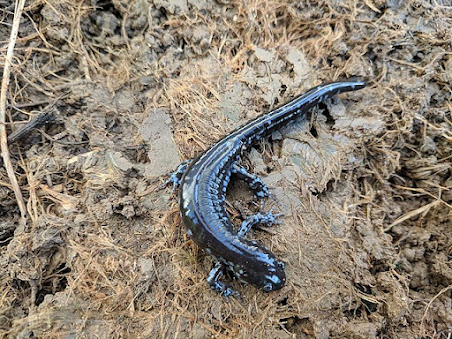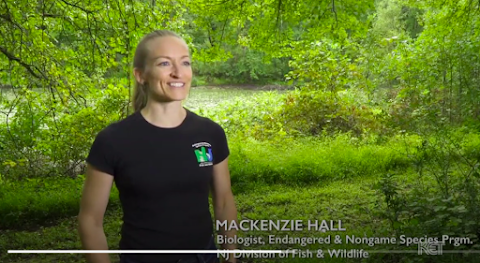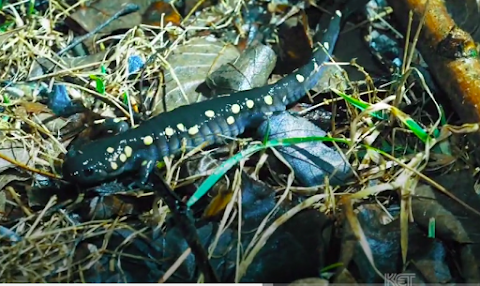 |
| Eastern Tiger Salamander Photo by Caitlin Smith/USFWS. |
Springlike weather has arrived and left NJ a few times already in February and March, but as the true spring season arrived this morning, vernal pools will appear and become more actively occupied.
Vernal pools are confined wetland depressions, either natural or man-made, that hold water for at least two consecutive months out of the year and are devoid of breeding fish populations.
Here in New Jersey, rural portions of the Skylands, Piedmont, and Coastal Plain landscapes are home to the majority of our vernal pools. These unique ecosystems provide habitat to many species of amphibians, insects, reptiles, plants, and other wildlife.
An endangered species in NJ, the
Eastern Tiger Salamanders (Ambystoma tigrinum) are part of the wildlife ritual that happens around those intermittent pools/ponds. This is where many amphibian species go to breed.
Habitat loss and water pollution have led to the decline of tiger salamander populations in the southern portion of New Jersey and by the mid-1970s their known historic breeding sites had been reduced to half - 19 sites.
Consequently, the Eastern Tiger Salamander was listed as an endangered species in 1974 and still remains on the list.
Protecting vernal ponds has led the NJDEP to adopt regulations that affords them protection under the State Freshwater Wetlands Protection Act.
The Eastern Tiger Salamander is only one challenged amphibian species in our state. Their breeding needs or habitat are impacted by water pollution, pesticides, roads, introductions of fish, off-road vehicles and development, especially on private land.
Some populations have been saved from local extinction by the species ability to utilize human-made "pools" such as trenches and construction areas as breeding ponds.
 |
| Spotted Salamander |
Another vernal pool visitor is the Spotted Salamander (Ambystoma maculatum). This a big salamander that is about 15–25 cm (5.9–9.8 in) long. They are stout with wide snouts. The spotted salamander's main color is black, but can sometimes be a blueish-black, dark grey, dark green, or even dark brown. Two uneven rows of yellowish-orange spots run from the top of the head (near the eyes) to the tip of the tail.
The Spotted Salamander breeds in large groups in vernal ponds in early spring, when the first
warm rains occur. It prefers deciduous or mixed woods. Outside of breeding season, it may be found under debris in humid conditions.
Adults can be observed moving into vernal pools sometime after the first spring rain as early
as the beginning of March. They will remain in these breeding ponds for up to a month before moving back to their terrestrial dwellings. Their range is the Northern and Western part of the state outside the Pinelands.
Amphibians of New Jersey
Vernal Pools in NJ













